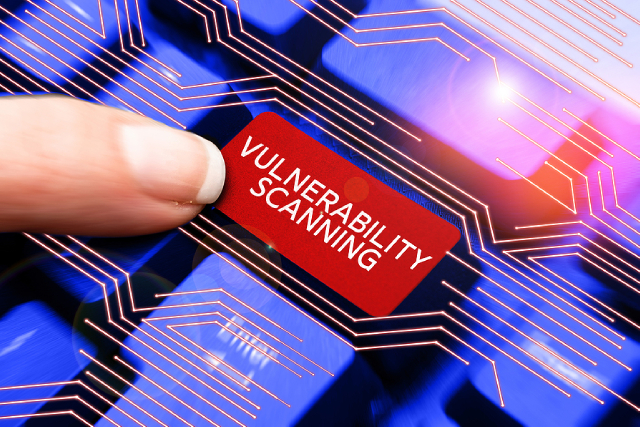- hello@group8.co
- 12 Marina View, Singapore

Today's digital landscape demands taking a proactive approach to cybersecurity in order to stay ahead of rapidly evolving cyber threats. With the increasing number of new attacks and vulnerabilities every day, the significance of accurate and, most importantly, early detection can no longer be overstated. To achieve such a proactive stance in cybersecurity, organisations must implement one of the cornerstones essential to the process – automated vulnerability scanning.
Vulnerability scanning or vulnerability assessment in Singapore is a process that detects and remediates vulnerabilities in an organisation's information systems, internal controls, and system processes that threat actors could exploit. While vulnerability scanning is traditionally done by a team of human specialists often aided with software, automated vulnerability scanning is solely handled by automated tools.
Vulnerability management software or services automatically scan critical systems, networks, and applications in its digital infrastructure with extreme precision and consistency. Not only that, it has the added benefit of logging, auditing, threat modelling, reporting, and remediation features that are indispensable to the early detection of weaknesses in one's cybersecurity posture.
This function, therefore, allows businesses to quickly address the shortcomings in their defence, focus their manual efforts on strategic analysis and remediation, and ensure that their defences outpace arising threats.
Automated vulnerability scans come in several different types, with the two most important distinctions being external vs internal and authenticated vs unauthenticated scans. Knowing the differences is key since using the most appropriate type for a given environment and business needs is vital.
1. External vs internal
External scanning looks beyond an organisation's network boundaries and mirrors a potential attacker's perspective. It probes externally-facing infrastructure to unveil vulnerabilities that may be exposed to attacks coming from the outside and ensure your cybersecurity posture is shielded where it is most visible to the cyber world.
On the other hand, internal scanning dives deep into the heart of an enterprise's network and meticulously examines the systems and devices within the secure perimeter of its firewall. This examination uncovers vulnerabilities that could be potentially exploited by insider threats and offers a granular view of security configurations from the inside out.
2. Authenticated vs non-authenticated
An automated vulnerability scan can be authenticated or non-authenticated, depending on the requirements. The former involves getting access to proper credentials and grants a privileged perspective similar to that of a trusted user to verify a system's integrity. In contrast, the latter operates without insider credentials to present the view from an unauthorised entity, making it ideal for pinpointing the weaknesses they may target first and evaluating the strength of the outer layers of your defences.
In this modern age where a minute oversight can lead to serious vulnerabilities, automated vulnerability scanning is a sentinel that prevents these security lapses in organisations. Below is a highlight of the core advantages they bring.
● Continuous and in-depth scanning
Continuous vulnerability scanning is not just about vigilance but also about creating a repeatable and sustainable process that keeps enterprise systems protected consistently. By covering both external and internal aspects of one's digital environment, automated vulnerability scanning ensures no cybersecurity weakness goes unnoticed.
● Comprehensive analysis
An automated vulnerability scan's thoroughness in scrutinising critical systems and identifying even the most obscure threats amplifies the echelons of cyber resilience.
● Quick turnaround
Unlike manual assessments that often stretch across extensive timelines, automated vulnerability scanning embodies efficiency as it transforms this tedious process to enable swift detection and remediation of vulnerabilities.
● Instant awareness
Automated vulnerability scans herald immediate highlighting of identified vulnerabilities, which paves the path for prompt resolution. By having rapid alertness on one's side, the window for vulnerability exploitation is significantly reduced and fortifies an organisation's security architectures.
Navigating the dangerous terrain of modern cybersecurity warrants stalwart security measures, tools, and processes such as automated vulnerability scanning. With its contributions in delivering swift and precise insights, organisations become better equipped to improve their cyber fortitude, preempt risks, and mitigate known and unknown threats.
Get started in setting up an automated vulnerability scanning process that suits your needs with the help of GROUP8, the industry leader in top-tier offensive-inspired cybersecurity services . With our suite of proven solutions ranging from blockchain security to vulnerability assessment and penetration testing services, you can count on us to support and fortify your cybersecurity posture against all threats.
For more information about our company's services, don't hesitate to email us at hello@group8.co.